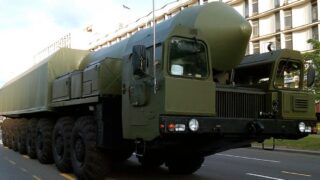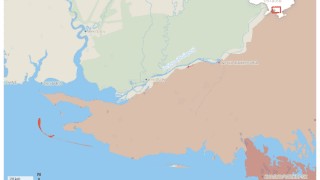
UK intel: Russia’s Oreshnik missile likely deployed for strategic messaging
In its November 29 intelligence update, the British Defense Ministry says Russia’s use of the Oreshnik intermediate-range ballistic missile against Ukraine on 21 November was almost certainly intended as strategic messaging following Ukraine’s use of Western missiles into Russia.
Russia’s 21 November strike on Dnipro marked the first combat use of a nuclear-capable Multiple Independently-targetable Reentry Vehicle (MIRV) intermediate-range ballistic missile (IRBM) carrying conventional warheads, representing a significant escalation by Russia in the Russo-Ukrainian War. It was the first combat use of the MIRV, marking a break from decades of deterrence doctrine.
According to the British intelligence, Russia likely possesses only a few Oreshnik missiles, which have not entered production and are significantly costlier than other missiles in use.

The Ministry wrote:
- On 21 November 2024, Russia targeted a Ukrainian munitions factory in Dnipro with the first-ever operational use of an intermediate-range ballistic missile (IRBM), codenamed Oreshnik. An IRBM is classified as having a maximum range of 3,000-5,500km. In this instance, the missile traveled just over 800km to its target.
- Russia announced its withdrawal from the Intermediate Nuclear Forces Treaty in February 2019, which banned the development and production of IRBMs. However, the development of Oreshnik almost certainly occurred before this. The system is highly likely a variant of the Rubezh RS-26 ballistic missile, which was first tested in 2011.
- The missile payload was observed as six groups of six warheads, for a total of 36 submunitions. These submunitions travel at hypersonic speeds (greater than Mach 5) before impact, as is typical for a missile of this class. All IRBM and intercontinental ballistic missile warheads travel at hypersonic speeds when re-entering the atmosphere.
- The use of this experimental system against Ukraine was almost certainly intended as strategic messaging following Ukraine’s use of Western missiles into Russia. Russia highly likely only has a handful of Oreshnik missiles, which are yet to enter serial production. This missile is highly likely to be far more expensive than other missiles Russia is currently using against Ukraine.
(Visited 1 times, 1 visits today)














